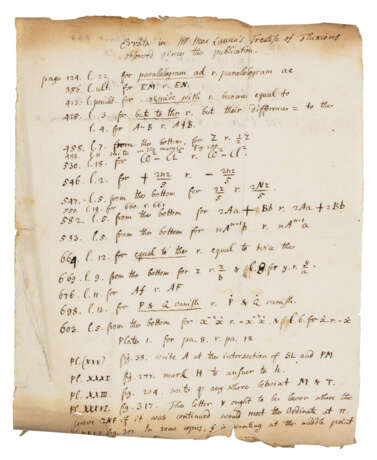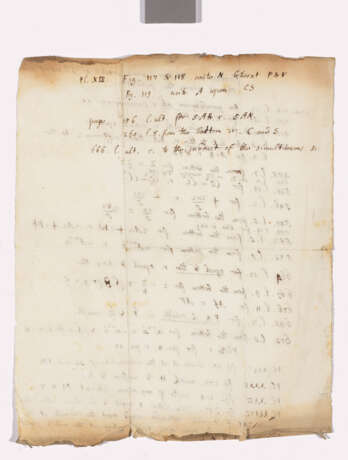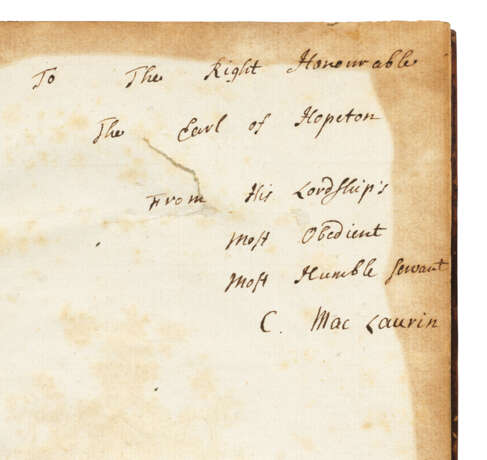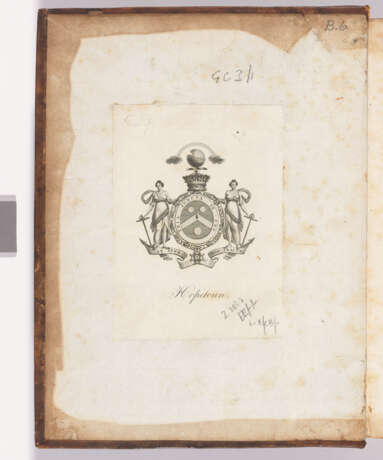ID 470155
Lot 106 | Colin MacLaurin (1698-1746)
Valeur estimée
£ 7 000 – 10 000
A Treatise of Fluxions. 1742
MACLAURIN, Colin (1698-1746). A Treatise of Fluxions. In Two Books. Edinburgh: Printed by T.W. and T. Ruddimans, 1742 [-1743].
First edition, a large and thick paper copy, presented by MacLaurin to the Earl of Hopetoun and with an autograph errata list: 'The earliest logical and systematic publication of the Newtonian methods' (DSB). The Treatise of Fluxions of 1742 was MacLaurin’s major work on analysis, incorporating – and somewhat dwarfing – what he had done earlier. It contains an exposition of the calculus, with old results explained and many new results introduced and proved. Maclaurin seems to have included almost everything he had done in analysis and its applications to Newtonian physics. A child prodigy, MacLaurin entered the University of Glasgow aged 11. At the age of 19 he was elected a professor of mathematics at Marischal College, Aberdeen, and two years later he became a fellow of the Royal Society, and became acquainted with Newton. On the recommendation of Newton, he was made a professor of mathematics at the University of Edinburgh in 1725. In 1740 he shared, with Leonhard Euler and Daniel Bernoulli, the prize offered by the French Academy of Sciences for an essay on tides. In the present work, MacLaurin expands upon the findings of the Paris prize paper. The Treatise was written partly as a response to the attack on the foundations of the method of fluxions and infinitesimal calculus made by George Berkeley in The Analyst (1734). 'The Treatise was generally cited by British fluxionists as the definitive answer to Berkeley’s criticism, but Maclaurin had accomplished much more than this ... Maclaurin’s work was cited with admiration by [the Continental analysts] Lagrange, Euler, Clairaut, d’Alembert, Laplace, Legendre, Lacroix, and Gauss' (Landmark Writings in Western Mathematics, pp.143 and 157). Norman 1408; Honeyman 2084. J.V. Grabiner, ‘Was Newton’s calculus a dead end? The continental influence of Maclaurin’s treatise of fluxions,’ American Mathematical Monthly 104 (1997), pp. 393-410. Please also see lot 44 for an autograph letter by MacLaurin about this book.
Two volumes, quarto (232 x 177mm). Half-title in vol. I, not present in vol. II as issued. 41 folding engraved plates (a few leaves neatly and faintly dogeared, occasional faint and insignificant spotting, pl. XXIV with small marginal tear sometime repaired, a couple of plates faintly browned, 60mm tear to 3M3 in vol. 2, this evidently a production flaw with old paper repair on verso overprinted by the letterpress). Contemporary calf (rebacked preserving original gilt spines, extremities rubbed with some loss of gilt to spines). Provenance: authorial presentation inscription on front free endpaper to: – the Earl of Hopetoun (presumably John Hope, 2nd Earl. 1704-1781, who succeeded his father on 26 February 1742; although the book is dated 1742, the second volume was probably not published until 1743; armorial bookplates of the Earls of Hopetoun) – Dr James Cross (of Melbourne, Australia, stamp on half-title in vol. 1 and flyeaf of vol. 2).
The copy also includes an autograph errata list by MacLaurin, entitled 'Errata in Mr Mac Laurin's Treatise of Fluxions observed since the publication'. 1½ pages, 235 x 193mm (dust-stained, worn at lower margin).
| Adresse de l'enchère |
CHRISTIE'S 8 King Street, St. James's SW1Y 6QT London Royaume-Uni | |
|---|---|---|
| Aperçu |
| |
| Téléphone | +44 (0)20 7839 9060 | |
| Commission | see on Website | |
| Conditions d'utilisation | Conditions d'utilisation |






